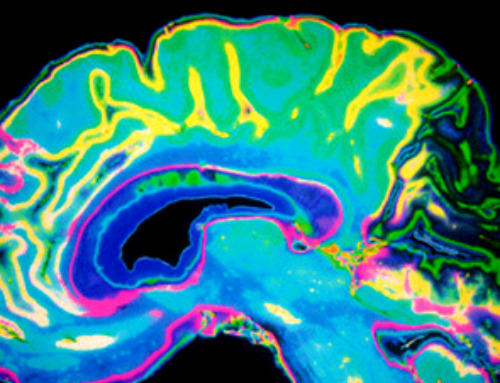Since it was detected in August 2023, the JN.1 variant of COVID has spread widely. It has become dominant in Australia and around the world, driving the biggest COVID wave seen in many jurisdictions for at least the past year.
The World Health Organization (WHO) classified JN.1 as a "variant of interest" in December 2023 and in January strongly stated COVID was a continuing global health threat causing "far too much"
JN.1 is significant. First as a pathogen – it's a surprisingly new-look version of SARS-CoV-2 (the virus that causes COVID) and is rapidly displacing other circulating strains (omicron XBB).
It's also significant because of what it says about COVID's evolution. Normally, SARS-CoV-2 variants look quite similar to what was there before, accumulating just a few mutations at a time that give the virus a meaningful advantage over its parent.
However, occasionally, as was the case when omicron (B.1.1.529) arose two years ago, variants emerge seemingly out of the blue that have markedly different characteristics to what was there before. This has significant implications for disease and transmission.
Until now, it wasn't clear this "step-change" evolution would happen again, especially given the ongoing success of the steadily evolving omicron variants.
JN.1 is so distinct and causing such a wave of new infections that many are wondering whether the WHO will recognize JN.1 as the next variant of concern with its own Greek letter. In any case, with JN.1 we've entered a new phase of the pandemic.
Where did JN.1 come from?
The JN.1 (or BA.2.86.1.1) story begins with the emergence of its parent lineage BA.2.86 around mid-2023, which originated from a much earlier (2022) omicron sub-variant BA.2.
Chronic infections that may linger unresolved for months (if not years, in some people) likely play a role in the emergence of these step-change variants.
In chronically infected people, the virus silently tests and eventually retains many mutations that help it avoid immunity and survive in that person. For BA.2.86, this resulted in more than 30 mutations of the spike protein (a protein on the surface of SARS-CoV-2 that allows it to attach to our cells).
The sheer volume of infections occurring globally sets the scene for major viral evolution. SARS-CoV-2 continues to have a very high rate of mutation. Accordingly, JN.1 itself is already mutating and evolving quickly.
How is JN.1 different to other variants?
BA.2.86 and now JN.1 are behaving in a manner that looks unique in laboratory studies in two ways.
The first relates to how the virus evades immunity. JN.1 has inherited more than 30 mutations in its spike protein. It also acquired a new mutation, L455S, which further decreases the ability of antibodies (one part of the immune system's protective response) to bind to the virus and prevent infection.
The second involves changes to the way JN.1 enters and replicates in our cells. Without delving into the molecular details, recent high-profile lab-based research from the United States and Europe observed BA.2.86 to enter cells from the lung in a similar way to pre-omicron variants like delta. However, in contrast, preliminary work by Australia's Kirby Institute using different techniques finds replication characteristics that are aligned better with omicron lineages.
Further research to resolve these different cell entry findings is important because it has implications for where the virus may prefer to replicate in the body, which could affect disease severity and transmission.
Whatever the case, these findings show JN.1 (and SARS-CoV-2 in general) can not only navigate its way around our immune system, but is finding new ways to infect cells and transmit effectively. We need to further study how this plays out in people and how it affects clinical outcomes.
Is JN.1 more severe?
The step-change evolution of BA.2.86, combined with the immune-evading features in JN.1, has given the virus a global growth advantage well beyond the XBB.1-based lineages we faced in 2023.
Despite these features, evidence suggests our adaptive immune system could still recognize and respond to BA.286 and JN.1 effectively. Updated monovalent vaccines, tests, and treatments remain effective against JN.1.
There are two elements to "severity": first if it is more "intrinsically" severe (worse illness with an infection in the absence of any immunity) and second if the virus has greater transmission, causing greater illness and deaths, simply because it infects more people. The latter is certainly the case with JN.1.
What next?
We simply don't know if this virus is on an evolutionary track to becoming the "next common cold" or not, nor have any idea of what that timeframe might be. While examining the trajectories of four historic coronaviruses could give us a glimpse of where we may be heading, this should be considered as just one possible path. The emergence of JN.1 underlines that we are experiencing a continuing epidemic with COVID and that looks like the way forward for the foreseeable future.
We are now in a new pandemic phase: post-emergency. Yet COVID remains the major infectious disease causing harm globally, from both acute infections and long COVID. At a societal and an individual level we need to re-think the risks of accepting wave after wave of infection.
Altogether, this underscores the importance of comprehensive strategies to reduce COVID transmission and impacts, with the least imposition (such as clean indoor air interventions).
People are advised to continue to take active steps to protect themselves and those around them.
For better pandemic preparedness for emerging threats and an improved response to the current one it is crucial we continue global surveillance. The low representation of low- and middle-income countries is a concerning blind spot. Intensified research is also crucial.
Written by:
- Suman Majumdar – Associate Professor and Chief Health Officer – COVID and Health Emergencies, Burnet Institute
- Brendan Crabb – Director and CEO, Burnet Institute
- Emma Pakula – Senior Research and Policy Officer, Burnet Institute
- Stuart Turville – Associate Professor, Immunovirology and Pathogenesis Program, Kirby Institute, UNSW Sydney
Adapted from an article originally published in The Conversation.
News
Gold Nanoclusters Could Supercharge Quantum Computers
Researchers found that gold “super atoms” can behave like the atoms in top-tier quantum systems—only far easier to scale. These tiny clusters can be customized at the molecular level, offering a powerful, tunable foundation [...]
A single shot of HPV vaccine may be enough to fight cervical cancer, study finds
WASHINGTON -- A single HPV vaccination appears just as effective as two doses at preventing the viral infection that causes cervical cancer, researchers reported Wednesday. HPV, or human papillomavirus, is very common and spread [...]
New technique overcomes technological barrier in 3D brain imaging
Scientists at the Swiss Light Source SLS have succeeded in mapping a piece of brain tissue in 3D at unprecedented resolution using X-rays, non-destructively. The breakthrough overcomes a long-standing technological barrier that had limited [...]
Scientists Uncover Hidden Blood Pattern in Long COVID
Researchers found persistent microclot and NET structures in Long COVID blood that may explain long-lasting symptoms. Researchers examining Long COVID have identified a structural connection between circulating microclots and neutrophil extracellular traps (NETs). The [...]
This Cellular Trick Helps Cancer Spread, but Could Also Stop It
Groups of normal cbiells can sense far into their surroundings, helping explain cancer cell migration. Understanding this ability could lead to new ways to limit tumor spread. The tale of the princess and the [...]
New mRNA therapy targets drug-resistant pneumonia
Bacteria that multiply on surfaces are a major headache in health care when they gain a foothold on, for example, implants or in catheters. Researchers at Chalmers University of Technology in Sweden have found [...]
Current Heart Health Guidelines Are Failing To Catch a Deadly Genetic Killer
New research reveals that standard screening misses most people with a common inherited cholesterol disorder. A Mayo Clinic study reports that current genetic screening guidelines overlook most people who have familial hypercholesterolemia, an inherited disorder that [...]
Scientists Identify the Evolutionary “Purpose” of Consciousness
Summary: Researchers at Ruhr University Bochum explore why consciousness evolved and why different species developed it in distinct ways. By comparing humans with birds, they show that complex awareness may arise through different neural architectures yet [...]
Novel mRNA therapy curbs antibiotic-resistant infections in preclinical lung models
Researchers at the Icahn School of Medicine at Mount Sinai and collaborators have reported early success with a novel mRNA-based therapy designed to combat antibiotic-resistant bacteria. The findings, published in Nature Biotechnology, show that in [...]
New skin-permeable polymer delivers insulin without needles
A breakthrough zwitterionic polymer slips through the skin’s toughest barriers, carrying insulin deep into tissue and normalizing blood sugar, offering patients a painless alternative to daily injections. A recent study published in the journal Nature examines [...]
Multifunctional Nanogels: A Breakthrough in Antibacterial Strategies
Antibiotic resistance is a growing concern - from human health to crop survival. A new study successfully uses nanogels to target and almost entirely inhibit the bacteria P. Aeruginosa. Recently published in Angewandte Chemie, the study [...]
Nanoflowers rejuvenate old and damaged human cells by replacing their mitochondria
Biomedical researchers at Texas A&M University may have discovered a way to stop or even reverse the decline of cellular energy production—a finding that could have revolutionary effects across medicine. Dr. Akhilesh K. Gaharwar [...]
The Stunning New Push to Protect the Invisible 99% of Life
Scientists worldwide have joined forces to build the first-ever roadmap for conserving Earth’s vast invisible majority—microbes. Their new IUCN Specialist Group reframes conservation by elevating microbial life to the same urgency as plants and [...]
Scientists Find a Way to Help the Brain Clear Alzheimer’s Plaques Naturally
Scientists have discovered that the brain may have a built-in way to fight Alzheimer’s. By activating a protein called Sox9, researchers were able to switch on star-shaped brain cells known as astrocytes and turn them into [...]
Vision can be rebooted in adults with amblyopia, study suggests
Temporarily anesthetizing the retina briefly reverts the activity of the visual system to that observed in early development and enables growth of responses to the amblyopic eye, new research shows. In the common vision [...]
Ultrasound-activated Nanoparticles Kill Liver Cancer and Activate Immune System
A new ultrasound-guided nanotherapy wipes out liver tumors while training the immune system to keep them from coming back. The study, published in Nano Today, introduces a biodegradable nanoparticle system that combines sonodynamic therapy and cell [...]





















